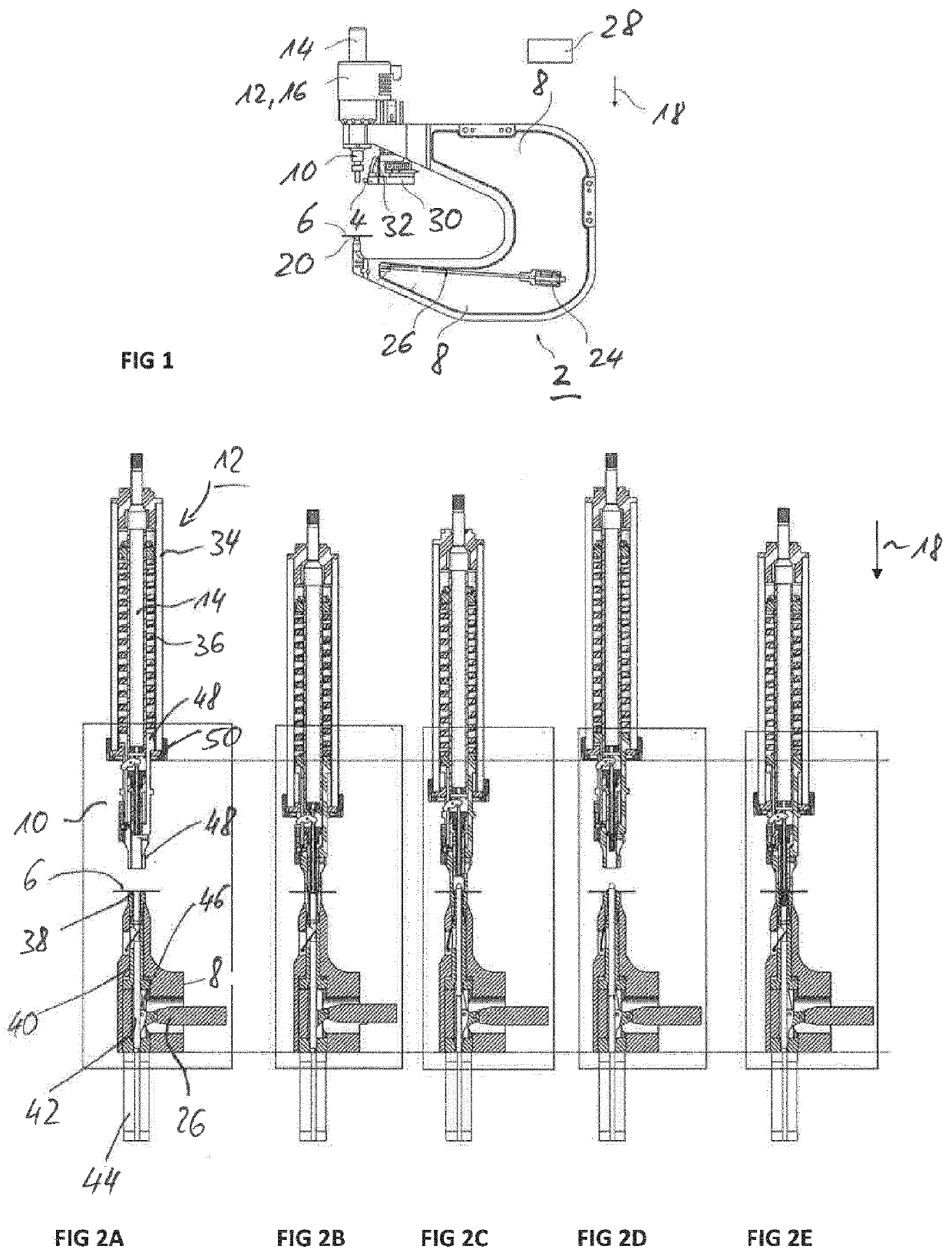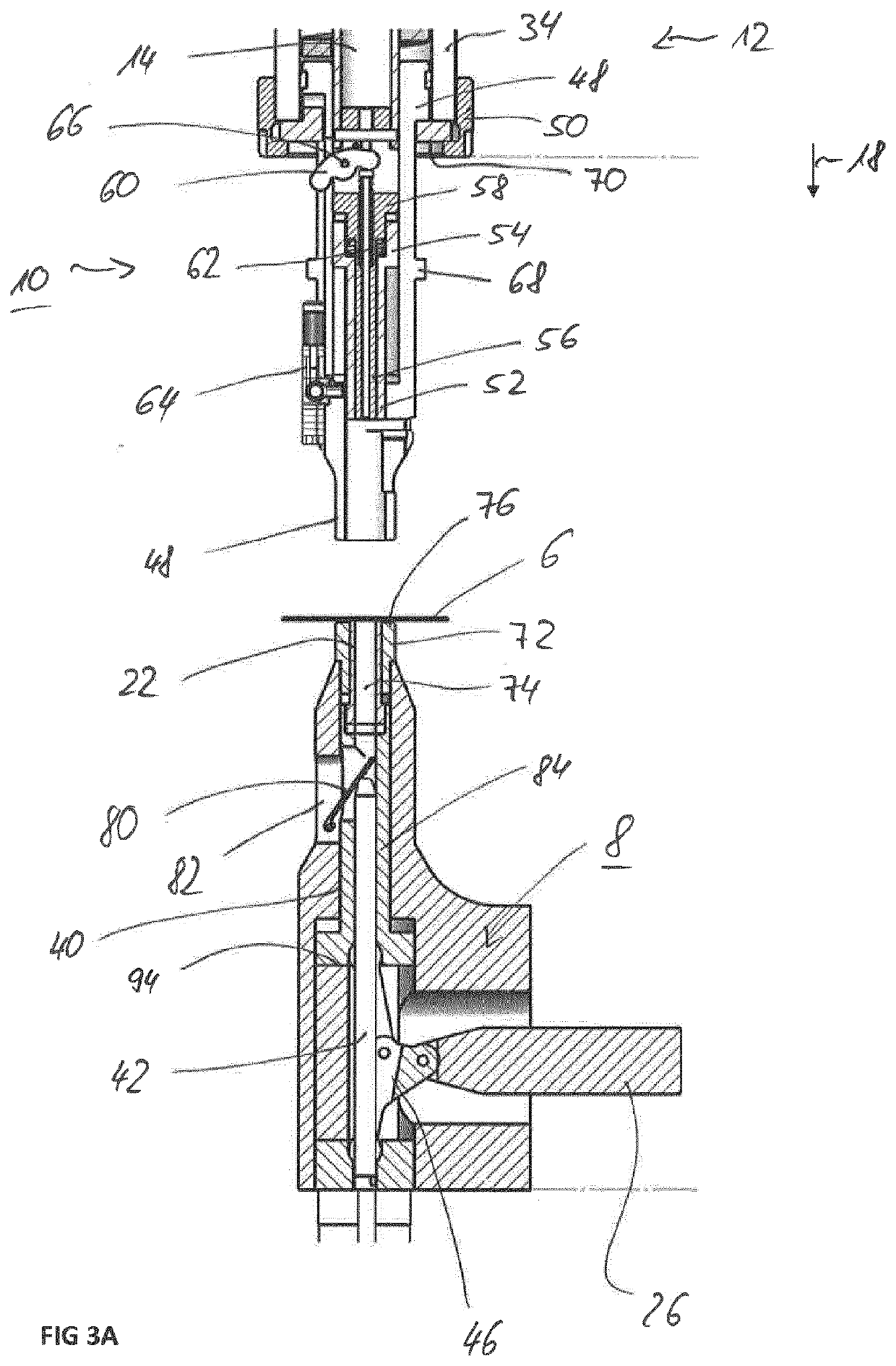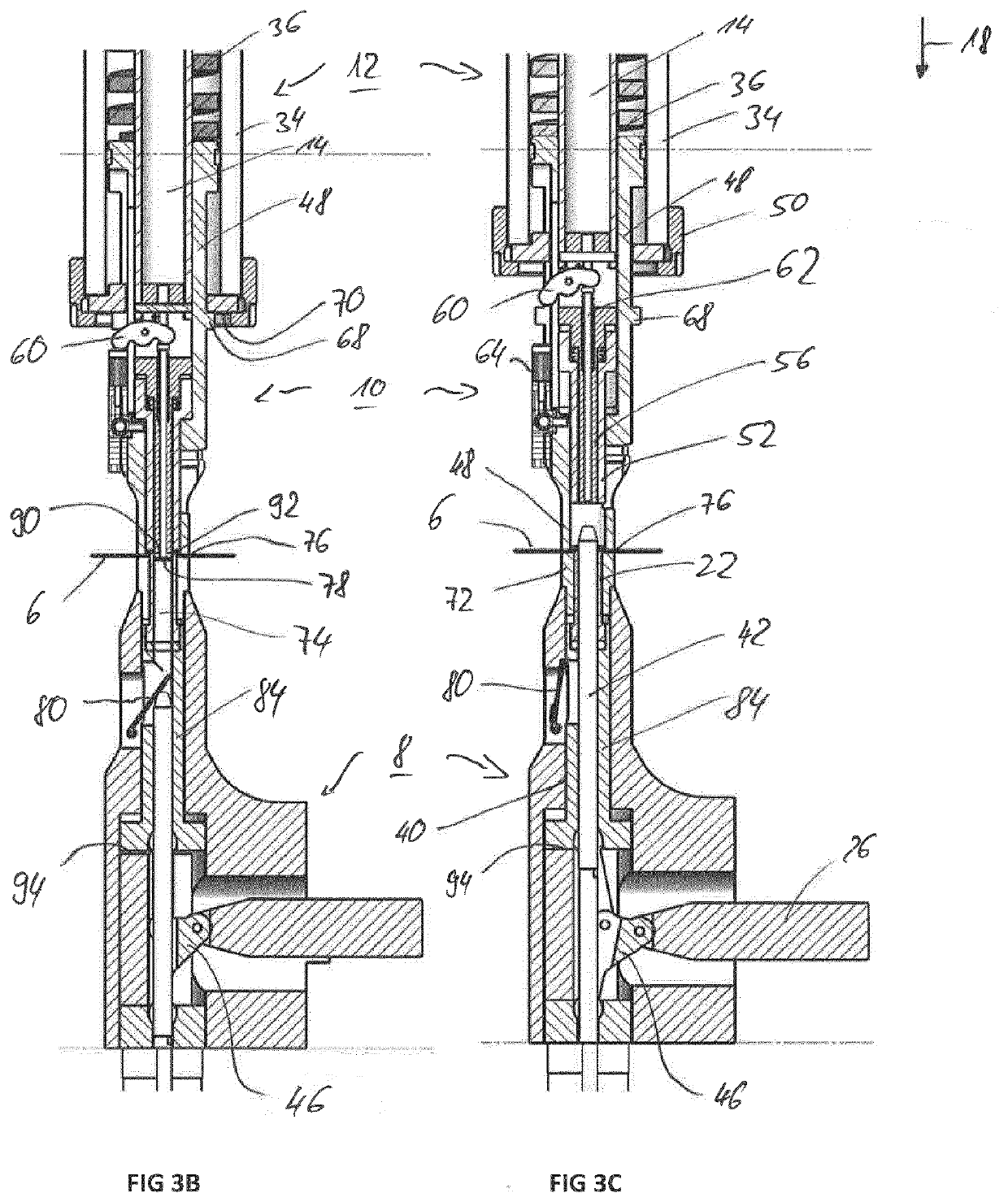Device and method for setting a connection element on a workpiece
- Summary
- Abstract
- Description
- Claims
- Application Information
AI Technical Summary
Benefits of technology
Problems solved by technology
Method used
Image
Examples
Embodiment Construction
[0050]FIG. 1 shows a device 2 which is designed to carry out a setting process and to set a connecting element 4, in particular a press-in bolt, in a component or workpiece 6. The workpiece 6 is, for example, a sheet metal or sheet metal component, for example a motor vehicle component. The connecting element 4 is in particular a so-called press-in bolt, which is typically connected to the workpiece 6 in a form-fitting and a force-fitting manner. Such a press-in bolt is basically characterized by a head and a shaft adjoining it, for example a threaded shaft.
[0051]The device 2 has a tool carrier 8, which in the exemplary embodiment is designed in the manner of a C-arm. A setting unit 10 is arranged on an upper arch arm, which in turn is connected to a feed unit 12. This has a plunger 14 and a drive 16, in particular an electric motor, which drives the plunger in a feed direction 18.
[0052]Opposite to the setting unit 10 is a component carrier 20 arranged at the lower bow arm of the to...
PUM
 Login to View More
Login to View More Abstract
Description
Claims
Application Information
 Login to View More
Login to View More - R&D Engineer
- R&D Manager
- IP Professional
- Industry Leading Data Capabilities
- Powerful AI technology
- Patent DNA Extraction
Browse by: Latest US Patents, China's latest patents, Technical Efficacy Thesaurus, Application Domain, Technology Topic, Popular Technical Reports.
© 2024 PatSnap. All rights reserved.Legal|Privacy policy|Modern Slavery Act Transparency Statement|Sitemap|About US| Contact US: help@patsnap.com










